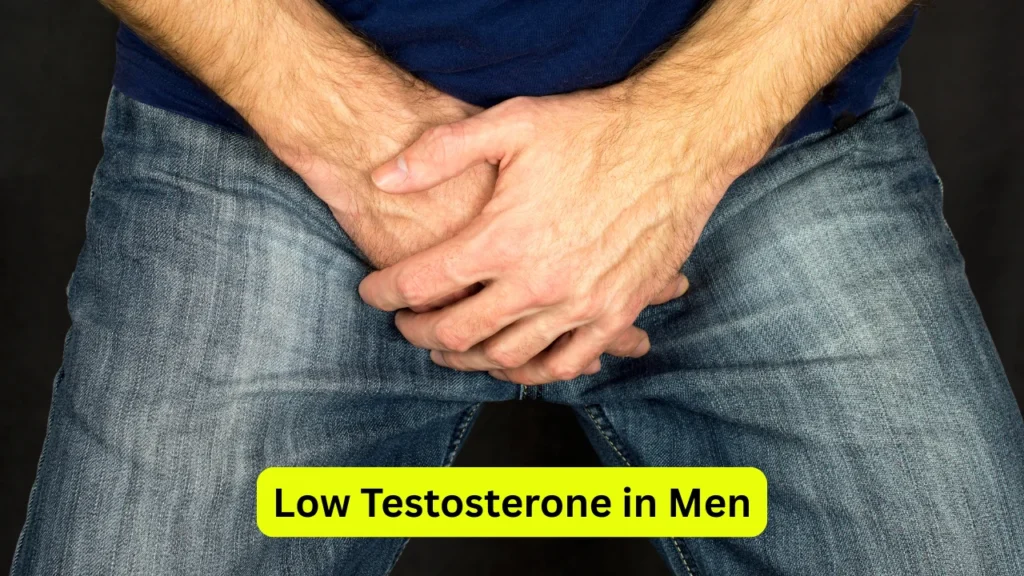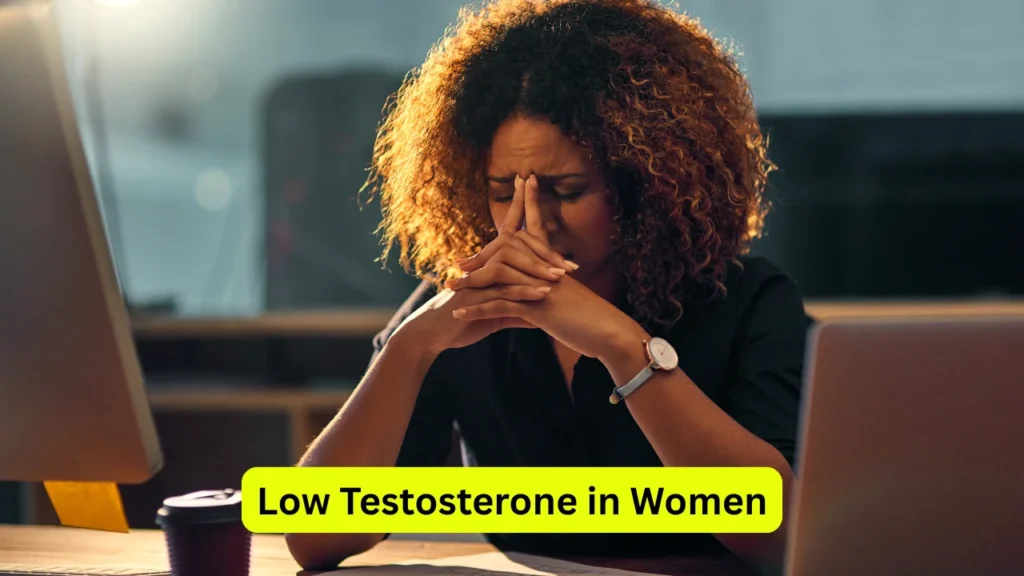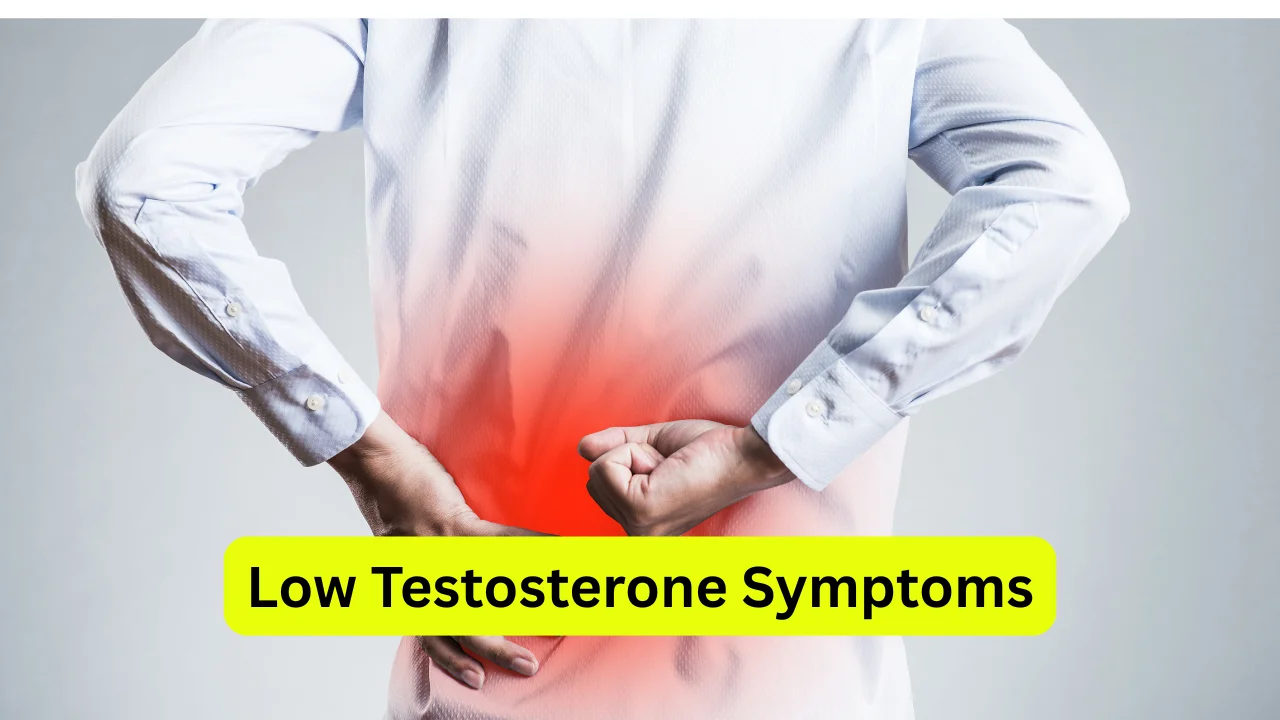You wake up feeling drained even after a full night’s sleep. Your workouts do not hit the same way anymore. Intimacy starts feeling off balance too. These changes often point to low testosterone symptoms that many guys experience without knowing. Low testosterone, or low T, occurs when your body fails to produce enough of this vital hormone. It controls your energy levels, muscle growth, and overall mood stability. If you notice these shifts in your daily routine, know that millions of men deal with this issue every year. Let’s explore it step by step so you can identify the signs and take action confidently.
Hormone Role in Body
Testosterone shapes your physical strength, sexual drive, and long-term health. It helps build and maintain muscle mass while keeping your bones dense and strong. When levels drop below normal, you start feeling the effects throughout your everyday activities. Many men begin seeing this gradual decline after turning 30 years old. Other lifestyle factors can accelerate the process even further.
Common Age Related Changes
As you get older, low testosterone levels become increasingly common among men. You might experience reduced energy or unexplained weight gain around your midsection. This does not mean you are just aging normally in every case. Hormone imbalances often play a direct role in these frustrating changes. Getting your levels checked can provide clear answers right away.
Impact on Daily Life
Low testosterone symptoms in men disrupt your normal routines in noticeable ways. You find it harder to concentrate on tasks at work or home. Mood swings become more frequent without any obvious trigger. Even simple physical activities start leaving you more tired than before. Recognizing these patterns early allows you to seek effective solutions before they worsen.
Why It Matters Now
Ignoring signs of low testosterone can lead to serious health complications over time. You increase your risk for bone density loss and cardiovascular problems. Addressing the issue promptly improves your overall quality of life significantly. Staying informed equips you to maintain your strength and vitality for years ahead.
Spotting Low Testosterone Symptoms
You might dismiss feeling off as nothing more than everyday stress buildup. However, symptoms of low testosterone appear in specific and consistent patterns. They influence your physical body, mental clarity, and personal relationships equally. Paying close attention to these clues helps you respond quickly and effectively.
Reduced Drive for Intimacy
A major low testosterone sign involves a noticeable drop in your sex drive. You feel far less interested in intimacy compared to previous years. This change creates frustration and confusion for many men experiencing it. Doctors often link this directly to low testosterone levels in men through routine testing.
Trouble with Erections
Erectile dysfunction frequently connects to hormone deficiencies in men. You struggle to achieve or maintain firmness during intimate moments. This symptom causes significant concern and impacts confidence levels. It serves as a clear indicator of underlying low testosterone effects that need attention.
Constant Tiredness Feelings
Low testosterone symptoms often manifest as overwhelming fatigue that persists all day. You wake up feeling exhausted despite getting adequate hours of sleep. Your energy levels dip sharply during routine activities. This makes both work responsibilities and leisure time much more challenging to enjoy.
Muscle Strength Loss
You observe your muscles becoming smaller and weaker over recent months. Strength training sessions produce fewer results than they used to deliver. Low testosterone in men contributes to this reduction in lean body mass. Regular exercise helps maintain what you have, but hormone levels determine your potential.
Mood Swings Often
Irritability, depression, or unexplained anxiety starts affecting your interactions. You experience emotional ups and downs without any clear reason behind them. Low testosterone anxiety represents a common yet overlooked aspect of this condition. It disrupts your mental balance and strains relationships with loved ones.
Low Testosterone in Men

Men encounter specific challenges when dealing with hormone deficiencies. Low testosterone in men reveals itself through both physical and emotional indicators. Understanding these helps you manage the condition more effectively in your life.
Energy Levels Drop
You find yourself dragging through each day with minimal motivation. Low testosterone in men symptoms prominently feature this persistent fatigue issue. Even after resting, your body does not recharge to full capacity. This leaves you feeling depleted for most of your waking hours.
Body Fat Increases
Unwanted weight accumulates primarily around your abdomen area. Low testosterone causes promote this fat storage pattern in the body. You work hard to lose it, yet progress remains frustratingly slow. Balancing hormones alongside diet makes a real difference here.
Hair Growth Slows
Your body hair and facial hair begin thinning out gradually. This subtle change signals deeper hormone imbalances at play. Many men feel self-conscious about these visible shifts. Monitoring overall health prevents further progression of the problem.
Bone Density Decreases
Your skeletal structure weakens, raising the chance of fractures from minor falls. Low testosterone side effects include this increased osteoporosis risk over time. Protecting your bone health requires proactive steps starting now. Strength training supports density maintenance effectively.
Sleep Patterns Disrupt
You toss and turn at night, struggling to achieve deep restorative sleep. Insomnia becomes a regular part of your evenings. This poor sleep quality amplifies all other low testosterone symptoms. Establishing better bedtime routines transforms your recovery process.
Low Testosterone in Young Males
Younger guys face hormone issues that affect their growth and development stages. Low testosterone symptoms in young males emerge during critical teenage years. These impact physical progress and self-esteem in lasting ways.
Delayed Growth Spurt
Puberty arrives later than expected or fails to progress normally. You notice slower increases in height compared to your peers. This delay creates worry for both teens and their families alike. Early medical evaluation identifies the root cause quickly.
Voice Change Delays
Your voice remains higher pitched well beyond the typical age range. Low testosterone in teens slows the natural deepening process significantly. Classmates often point out the difference, adding to social pressure. Hormone therapy can help catch up when needed.
Muscle Build Slows
Gaining strength through sports or training requires much more effort now. Low testosterone in young men limits your ability to develop muscle mass. Athletic performance suffers as a direct result of this. Consistent workouts combined with checks restore potential.
Genital Development Issues
Growth of the penis and testicles lags behind normal timelines. This physical change leads to embarrassment during locker room situations. Consulting specialists ensures proper development occurs. Treatment options exist to support healthy maturation.
Emotional Ups and Downs
Frequent mood changes intensify during these formative years. Low testosterone at young age contributes to heightened frustration levels daily. Friends and family provide essential support through tough periods. Professional guidance stabilizes emotions effectively.
Low Testosterone in Women

Women rely on smaller amounts of testosterone for vitality and well-being. Low testosterone symptoms in women often go undiagnosed for extended periods. These affect energy, desire, and physical tone in subtle yet impactful manners.
Libido Drops Noticeably
You experience reduced interest in sexual activity with your partner. Low testosterone in females directly diminishes this natural drive over time. Relationship dynamics shift as a consequence of these changes. Balanced hormone approaches restore intimacy naturally.
Fatigue Sets
In Daily tasks feel overwhelmingly draining despite your best efforts. Low testosterone in women triggers this constant exhaustion that rest cannot fully relieve. Productivity suffers across work and home responsibilities alike. Addressing the source revitalizes your routine.
Muscle Tone Weakens
Your arms and legs lose firmness and definition gradually. Exercise routines yield diminishing returns on strength gains. Low testosterone symptoms in females play a key role in this softening. Targeted training rebuilds tone when paired with solutions.
Mood Becomes Unstable
Anxiety spikes or sadness lingers without apparent triggers. Emotional fluctuations disrupt your sense of inner peace. Low testosterone female imbalances exacerbate these mental health challenges. Therapy combined with hormone support stabilizes your outlook.
Bone Health Suffers
Fracture risks increase as density decreases with age progression. Protecting skeletal integrity requires attention to hormone levels early. Low dose testosterone for women offers safe benefits under medical supervision. Regular scans track improvements over time.
Causes of Low Testosterone
Multiple factors contribute to hormone deficiencies in both men and women. Low testosterone causes span lifestyle choices, medical conditions, and natural processes. Identifying them empowers you to make preventive changes today.
Aging Process Effects
Natural production declines steadily after reaching age 30 in men. You lose approximately one percent of levels each passing year. This explains why older adults report more symptoms frequently. Lifestyle adjustments slow the rate of further loss effectively.
Obesity Role in Drop
Excess body fat actively converts testosterone into estrogen compounds. Low testosterone reason often ties directly to carrying extra weight around. Shedding pounds through diet reverses this harmful cycle quickly. Sustainable habits yield lasting hormone improvements.
Chronic Illness Impact
Conditions like diabetes disrupt normal hormone signaling pathways. Ongoing inflammation from diseases lowers production capacity over time. Managing these health issues protects your testosterone reserves. Regular doctor visits catch problems in advance.
Medication Side Effects
Certain prescriptions interfere with your body’s natural output mechanisms. Opioids and steroids represent frequent culprits in clinical cases. Reviewing your current medications with providers identifies risks early. Safer alternatives exist for many patients.
Injury to Testicles
Physical trauma or infections damage the primary production sites. Sudden drops follow these events in affected individuals. Protective measures during activities prevent avoidable incidents. Recovery focuses on restoring function whenever possible.
| Common Causes | Description | Risk Group |
|---|---|---|
| Aging | Natural decline starts at 30 | Men over 30 |
| Obesity | Fat converts testosterone | Overweight individuals |
| Diabetes | Insulin resistance lowers levels | Those with type 2 |
| Medications | Opioids suppress production | Long-term users |
| Injuries | Testicle damage reduces output | Active or accident-prone |
Diagnosis for Low Testosterone
You wonder if do I have low testosterone when symptoms persist despite healthy habits. Low testosterone diagnosis follows straightforward steps involving tests and consultations. This process confirms whether hormones cause your concerns.
Blood Test Basics
Doctors draw blood samples early in the morning for peak accuracy. Low testosterone test measures levels below 300 ng/dL as deficient typically. Repeating the test verifies results and rules out temporary fluctuations. Results guide your next treatment decisions clearly.
Symptom Discussion Needed
Describe your experiences in detail during office visits with providers. They connect reported signs of low testosterone in men to lab findings precisely. Open communication ensures accurate assessments every time. This builds a complete picture of your health status.
Hormone Panel Checks
Additional blood work examines LH and FSH for cause identification. These distinguish between primary and secondary deficiency types effectively. Understanding the origin tailors your treatment plan perfectly. Comprehensive testing avoids guesswork entirely.
Physical Exam Role
Providers assess body composition changes like muscle and fat distribution. They check for secondary signs such as gynecomastia development. This hands-on evaluation complements lab data reliably. It reveals patterns not visible through blood work alone.
Follow Up Importance
Schedule retests to monitor progress after starting any interventions. Low testosterone diagnosis remains ongoing to adjust therapies as needed. Consistent tracking prevents complications from developing unnoticed. You stay in control of your hormone health journey.
| Normal Ranges | Age Group | Level (ng/dL) |
|---|---|---|
| Adult Men | 19-39 | 264-916 |
| Older Men | 40-59 | 252-902 |
| Women | 19-49 | 8-60 |
| Teens Boys | 14-17 | 300-1200 |
| Teens Girls | 14-17 | 20-75 |
Low Testosterone Treatment Options
Effective solutions exist to restore balance when levels fall too low. Low testosterone treatment targets symptom relief and long-term health benefits. Select approaches based on your lifestyle preferences and medical advice.
Replacement Therapy Types
Topical gels, injections, patches, and pellets deliver steady hormone doses. Low testosterone medicine produces noticeable improvements within weeks usually. Regular monitoring ensures safety and optimal dosing throughout. Patients report enhanced energy and mood consistently.
Natural Boost Methods
Lifestyle modifications complement or replace medical interventions successfully. Low testosterone natural treatment emphasizes sustainable daily habits for results. Many men achieve sufficient increases without prescriptions alone. Combining methods maximizes your overall outcomes effectively.
Low Dose for Women
Smaller, precise amounts benefit women seeking libido and energy restoration. Low dose testosterone for women minimizes risks while delivering benefits. Gynecologists specialize in tailoring these protocols safely. Follow-up appointments track progress and adjust as required.
Monitoring Treatment Progress
Track changes in symptoms, energy, and lab values over treatment months. Low testosterone treatment results vary but often impress patients greatly. Blood work every three to six months confirms effectiveness. Adjustments keep you progressing toward goals steadily.
Potential Side Effects
Acne, fluid retention, or sleep apnea may occur with certain therapies. Discuss risks and benefits thoroughly before starting any regimen. Most side effects resolve with dosage tweaks promptly. Informed choices protect your health during recovery.
| Treatment Type | How It Works | Frequency |
|---|---|---|
| Gels | Applied to skin | Daily |
| Injections | Into muscle | Every 1-2 weeks |
| Patches | Stuck on skin | Daily |
| Pellets | Implanted | Every 3-6 months |
| Oral Pills | Swallowed | As prescribed |
Boost Testosterone Naturally
You hold power to elevate levels through consistent daily choices. Low testosterone how to increase relies on proven habit changes that work. Implementing these steps yields measurable improvements over time.
Diet Choices Matter
Prioritize zinc-rich foods like oysters, beef, and pumpkin seeds daily. Low testosterone diet supports production by providing essential building blocks. Limit sugar and processed items that spike insulin negatively. Balanced meals fuel hormone synthesis around the clock.
Exercise Routine Helps
Focus on heavy compound lifts like squats and deadlifts three times weekly. Low testosterone exercise triggers acute spikes in production post-workout. High-intensity interval training adds further benefits efficiently. Recovery days prevent overtraining from counterproductive drops.
Sleep Quality Improves
Secure seven to nine hours of uninterrupted sleep each night religiously. Poor rest halves your daily testosterone output dramatically. Create a dark, cool bedroom environment for optimal cycles. Consistent schedules align your body’s natural rhythms perfectly.
Stress Management Techniques
Practice deep breathing or meditation to lower cortisol interference daily. Elevated stress hormones directly suppress testosterone creation continuously. Short walks in nature provide simple yet powerful relief. Finding personal calm boosts hormone balance naturally.
Supplements to Consider
Vitamin D, magnesium, and fenugreek show promise in clinical studies. Low testosterone supplements fill common dietary gaps effectively for many. Consult providers before adding new products to routines. Quality brands ensure purity and potency every time.
Diet for Hormone Health
Nutrition directly influences your hormone production capacity daily. Low testosterone treatment foods emphasize nutrient-dense options for optimal results. Building meals around these principles sustains elevated levels long-term.
Protein Sources Key
Incorporate lean chicken, eggs, and fish into every main meal. These provide amino acids essential for hormone manufacturing processes. Adequate intake prevents muscle breakdown from low T effects. Variety keeps your diet enjoyable and effective.
Healthy Fats Essential
Avocados, olive oil, and fatty fish supply cholesterol needed for synthesis. Monounsaturated fats protect existing testosterone from conversion losses. Including them boosts absorption of fat-soluble vitamins too. Balance prevents deficiencies that harm production.
Veggies for Balance
Load plates with spinach, broccoli, and kale for magnesium and folate. These cruciferous vegetables help detoxify excess estrogen naturally. Fiber content supports gut health linked to hormone regulation. Colorful variety maximizes antioxidant protection daily.
Fruits in Moderation
Berries and citrus fruits deliver vitamin C without excessive sugar spikes. Antioxidants shield Leydig cells responsible for testosterone output. Portion control maintains stable blood sugar levels critical. Fresh options taste best and preserve nutrients fully.
Hydration Supports All
Drink at least half your body weight in ounces of water every day. Dehydration stresses the endocrine system and lowers output. Herbal teas count toward totals while adding flavor variety. Consistent intake keeps all bodily functions optimized.
| Food Group | Examples | Benefits |
|---|---|---|
| Proteins | Chicken, eggs | Builds muscle |
| Fats | Nuts, olive oil | Hormone base |
| Veggies | Spinach, broccoli | Vitamin boost |
| Fruits | Berries, citrus | Antioxidant help |
| Grains | Oats, quinoa | Energy sustain |
Exercise Plans for Boost
Physical activity stimulates hormone release more effectively than any pill. Low testosterone fix through structured workouts delivers reliable gains. Follow these plans to see changes in strength and vitality.
Strength Training Focus
Perform squats, bench presses, and rows with progressive heavier weights. Train major muscle groups three to four days per week consistently. This protocol elevates levels for up to 48 hours post-session. Form priority prevents injuries that set you back.
Cardio in Balance
Incorporate 20-minute HIIT sessions twice weekly for fat-burning benefits. Long endurance runs in excess actually lower testosterone over time. Sprint intervals mimic ancestral stress patterns favorably. Recovery focus maintains the positive hormone response.
Rest Days Important
Schedule at least two full recovery days between intense lifting sessions. Overtraining elevates cortisol and crashes testosterone production rapidly. Active recovery like walking promotes circulation without fatigue. Listen to your body signals always.
Yoga for Stress
Practice 20-minute flows focusing on hip openers and inversions weekly. These reduce cortisol while improving sleep quality dramatically. Breathwork components enhance parasympathetic activation beneficially. Beginners find accessible classes online easily.
Tracking Progress Tips
Log weights lifted, reps completed, and how you feel each session. Monthly photos and measurements document body composition shifts clearly. Adjust volume based on energy levels and recovery feedback. Consistency compounds results over months impressively.
Preventing Low Testosterone
Proactive habits keep your levels within healthy ranges naturally. Prevention strategies protect against declines before symptoms appear. Simple daily commitments yield protection for decades ahead.
Maintain Healthy Weight
Track body fat percentage and aim for 10-20% range as a man. Excess adipose tissue actively sabotages hormone balance continuously. Weekly weigh-ins combined with calorie tracking works well. Sustainable deficits prevent yo-yo effects harmful long-term.
Manage Chronic Conditions
Control blood sugar and thyroid function through regular medical care. Untreated diabetes destroys testosterone-producing cells progressively. Annual comprehensive blood panels catch issues early always. Medication adherence combined with lifestyle preserves levels effectively.
Limit Alcohol Intake
Restrict consumption to three drinks maximum per week safely. Excess alcohol directly poisons Leydig cell function immediately. Choose quality over quantity when indulging occasionally. Hydration between drinks mitigates damage significantly.
Avoid Harmful Chemicals
Store food in glass rather than plastic containers daily. BPA and phthalates mimic estrogen and lower testosterone steadily. Choose natural cleaning products free of endocrine disruptors. Small swaps accumulate into major protective benefits.
Regular Health Checks
Schedule annual hormone panels if you have risk factors present. Early detection allows simple interventions before symptoms dominate. Discuss family history with providers for personalized screening. Knowledge empowers you to stay ahead of declines.
FAQs
What are common low testosterone symptoms?
Common signs include persistent fatigue, reduced sex drive, and muscle loss. Mood changes and erectile difficulties often accompany them too. A doctor can confirm through testing accurately.
How do I know if I have low testosterone?
Blood tests taken in the morning provide definitive answers for levels. Share all your symptoms during consultations for complete evaluation. Results guide appropriate next steps clearly.
Can women have low testosterone symptoms?
Women absolutely experience similar issues though at lower baseline levels. Fatigue, low libido, and mood instability represent frequent complaints. Specialized treatments address female needs safely.
What causes low testosterone in young males?
Genetics, injuries, or underlying illnesses often trigger early deficiencies. Delayed puberty serves as a primary warning sign usually. Prompt medical intervention supports normal development effectively.
Are there natural ways to fix low testosterone?
Diet improvements, resistance training, and quality sleep raise levels reliably. Stress reduction techniques enhance these efforts significantly. Many achieve balance without medications successfully.
Also Read: Creatine and Hair Loss
Summary
Low testosterone symptoms touch every aspect of your physical and mental life profoundly. You explored detailed signs affecting men, young males, and women comprehensively. Causes range from aging processes to lifestyle factors you control. Diagnosis relies on accurate blood testing paired with symptom reviews. Treatment options span medical therapies to natural lifestyle upgrades. Tables illustrated causes, normal ranges, and effective methods clearly. Implementing diet and exercise changes empowers you to reclaim vitality. Take action today to experience the strong, energetic version of yourself again.

Dr. Max is a dedicated medical professional with extensive experience in health and wellness. His approach blends clinical expertise with the latest research, offering practical insights to help individuals lead healthier, more balanced lives.

